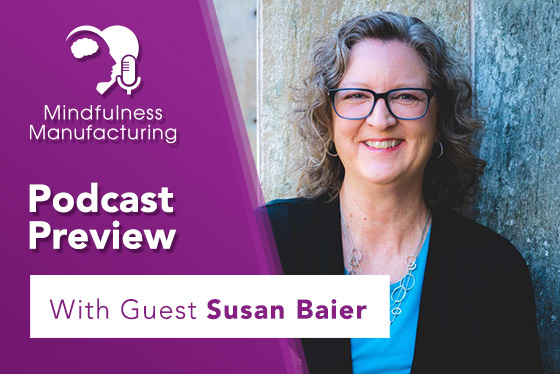“What Else Can I Do to Help?” And Other Ways to Be Relentlessly Helpful
“What else can I do to help?”
When Susan Baier, a professional speaker and the founder of Audience Audit, was fresh out of college, this simple question changed the entire trajectory of her career. As she recently shared as a guest on my Mindfulness Manufacturing podcast, Susan was in an interview with an advertising professional when she—and her interviewer—realized she wasn’t yet fully knowledgeable in the world of advertising. But instead of sending her on her way, Susan’s interviewer took the time to teach her about the basics of advertising, set her up with a few of his connections, and asked “what else can I do to help you?”
Thanks to this interaction, Susan went on to a long career in advertising and marketing, and now helps businesses owners improve their ROI. It also showed her the importance of being “relentlessly helpful,” which was the topic of our recent podcast.
What Does It Mean to Be Relentlessly Helpful?
Being relentlessly helpful is all about thinking about how you can help others in your organization or life. This means acting like Susan’s interviewer did by asking deep and supportive questions, like “what else can I do to help?” Instead of simply asking surface-level questions like “how it’s going today?” a relentlessly helpful leader stays mindful and curious. Through this, they find new—and sometimes unexpected—ways to support, guide, or inspire others in their organization.
Other Steps for Building a Relentlessly Helpful Mindset
Along with using questions like “what else can I do to help?” there are a few steps leaders can take to bring more relentlessly helpfulness to their team or organization.
1. Shift Your Mindset
If you’re a leader, you might often spend time asking others to do things for you, like finishing a task on the floor or giving a presentation. To practice being relentlessly helpfulness, shift your mindset to think about how you can help others.
2. Don’t Dismiss Your Knowledge
You might not feel qualified to share wisdom with others, but everyone has something they can share! To find the best ways to help others, think about your unique experiences and knowledge, and how they might apply to someone else. For example, maybe you have interview tips for a team member applying for a promotion, or can use your experience in public speaking to help someone prepare for a big presentation.
3. Embrace the Small Gestures
In your busy schedule, it’s likely you’ll have days where you don’t have as much time for helpfulness, or where you aren’t feeling up to helping others in a big way. However, there are always small ways to be helpful. Even when you’re busy, something as simple as “I’m available to talk if you need me” can go a long way.


Communication is Key
Like in so many other areas of leadership, shifting your mindset involves communication! To find the best ways to support your team members and others in your organization, stay curious and open to communication. By asking deep questions and paying attention, you’ll learn new, productive ways to be helpful.
Learn More on the Podcast
Thanks to Susan Baier for joining me on the Mindfulness Manufacturing to share her own story and tips on how to be relentlessly helpful! If you’d like to hear more from Susan, be sure to check out her episode of the Mindfulness Manufacturing podcast, which you can listen to here.
At Manufacturing Greatness, Trevor Blondeel works with manufacturers to connect the top to the shop. If you’re ready to improve your own organization, contact Trevor to learn how Manufacturing Greatness can help you build stronger leaders and develop a dynamic, high-performing workplace.

